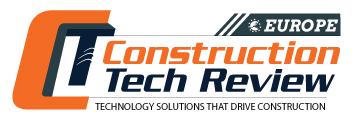THANK YOU FOR SUBSCRIBING

Engage Smarter: Why Constraints Matter More Than Hazards
Chris Daniels, Senior Safety Director, Mortenson

 Chris Daniels, Senior Safety Director, Mortenson
Chris Daniels, Senior Safety Director, MortensonFor decades, safety professionals have focused their engagement with frontline workers on identifying workplace hazards. This approach has long been considered intuitive—after all, hazards are visible, tangible, and directly tied to risk. But as the industry continues to grapple with a plateaued fatality rate, it’s time to ask: Is hazard-focused engagement enough?
While hazard discussions certainly add value, especially for newer employees, experienced front-line workers often have a deep understanding of the risks they face. They work with these hazards daily. Repeating the same hazard-focused conversations can feel redundant— and at times, even patronizing. This dynamic may unintentionally disengage the very people safety professionals aim to support.
This raises two critical questions: If our front-line workers are well aware of the hazards, why has the industry’s fatality rate remained stagnant for nearly two decades? And if not hazards, what should safety professionals focus on to drive meaningful discussion?
The answer lies in a more proactive approach: engaging on constraints.
What Are Constraints?
Constraints are workplace conditions that reduce a worker’s capacity to manage change effectively. These include human factors, error traps, task complexity, policy confusion, inadequate controls, and environmental or procedural challenges & changes. Unlike hazards, which are typically static and observable, constraints are dynamic and situational. They challenge workers to adapt—and it’s in these moments of adaptation that risk emerges.
Adaptations can take two forms: at-risk behaviors or innovations. Both offer learning opportunities. At-risk behaviors highlight vulnerabilities, while innovations reveal resilience and creativity. Either way, understanding the constraint that triggered the adaptation provides insight into how work is truly performed—and where safety systems may become compromised.
Why Constraints Deserve More Attention
If constraints lead to adaptations, and adaptations can lead to at-risk behaviors, then proactively identifying and addressing constraints becomes a powerful strategy for preventing incidents. Even when adaptations yield positive outcomes, they often reveal inefficiencies or gaps that, if corrected, can benefit the entire workforce.
“The obvious hazard is the risk of falling, and the workers are well aware of it. Instead of asking, You’re protecting yourself from falls, right? a more effective approach would be, What gets in your way from implementing fall protection 100 percent of the time?”
Moreover, engaging on constraints builds trust. It demonstrates respect for the expertise of frontline workers and invites them to collaborate on improving the process. It shifts the conversation from what are you doing wrong? to what’s making this job harder than it needs to be?
Even if constraints aren’t the cause of every incident, addressing them makes workers’ tasks easier. It increases their capacity, thereby enhancing their ability to manage hazards more effectively. It’s a win either way.
Balancing Hazard and Constraint Engagement
Hazard recognition will always have a place in safety conversations. It’s essential for onboarding, training, and reinforcing foundational knowledge. However, for experienced workers, constraint-focused engagement fosters richer and more meaningful dialogue. In fact, the more seasoned the worker, the more valuable constraint-based conversations become.
This shift doesn’t mean abandoning hazard discussions—it means integrating constraint identification into daily interactions. It means asking better questions, listening more closely, and looking beyond the obvious.
Workers Appreciate Constraint Engagements More
Consider a safety professional auditing a roofing contractor. The obvious hazard is the risk of falling, and the workers are well aware of it. Instead of asking, You’re protecting yourself from falls, right? a more effective approach would be, What gets in your way from implementing fall protection 100 percent of the time? This opens the door to meaningful dialogue about tie-off locations, equipment limitations, or procedural gaps.
The difference between these two approaches is evident. The latter demonstrates genuine interest in the worker’s experience and challenges. It fosters collaboration and trust. When safety professionals help remove barriers, they make the safe choice the easy choice—and that’s when safe behaviors become predictable.
A Path Forward: Integrating Constraints with High-Energy Risk Assessments
The persistent plateau in fatality rates is deeply concerning. One promising approach is to combine High Energy Control Assessments with constraint identification. Imagine an assessment that not only evaluates high-risk energies and their controls but also highlights the constraints that make those controls difficult to implement.
This dual focus—on both the hazard and the constraint—offers a more complete picture of risk. It enables safety teams to prioritize interventions, improve systems, and empower workers to operate more safely and effectively.
Conclusion
The safety profession is at a crossroads. Continuing to rely solely on hazard recognition will not deliver the breakthroughs we need. By engaging smarter, by focusing on constraints— we can unlock new opportunities for learning, improvement, and ultimately, saving lives.
Let’s shift the conversation and address the problems we created and left for our workers to manage—the very people we are supposed to support.
Read Also
Development of the Logistics Warehousing Market in Brazil
Driving Innovation and Preserving Tradition
Operational Leadership VS Field Leadership in the Utility Construction Business
People-First Innovation: Developing Virtual Design and Construction (VDC) Training Programs to Empower Field Team Members
Sustainable Projects: Aligning Business and Purpose in Latin America
Obligation or Option?

 Copyright © 2025 All Rights Reserved | by:
Copyright © 2025 All Rights Reserved | by: Construction Tech Review
| Subscribe | About us | Sitemap| Editorial Policy| Feedback Policy













